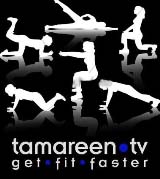when a person decide to start training, they do so for several different reasons, some may want to lose a few pounds, others want to gain a few pounds, some want to increase their strength to help them in their sports, while others just want to became healthier.
These are many reasons for starting training, there is no doubt that training help improve your body and health. But if the person starts training for a specific reason and didn’t notice an improvement in what they are looking for, it’s very unlikely that they will keep on training, they will just get fed up by the poor results and quite.
Here comes the importance of periodical assessment, whether done by a trainer or yourself, it’s very important to be done to see you’re benefiting from training. In our nature, if we see an improvement, you don’t feel you wasted your time, and will give you a good motive to continue training.
One of the best ways to do this is by keeping a journal, and recording data which can be compared with previous ones and you can see if your gaining benefits, even a slight benefit will boost you up and tell you you’re going the right track. If not then it gives you a clue that you’re are not doing everything right and you need to modify your training somehow.
In this article, we will discuss the type of data that will be recorded and used to measure body improvement over the time.
Scales
One of the simplest ways to see measure your improvement is using the scale, this is best used when your goal is gaining or losing weight.
Notes about this method:
 its not good to measure you weight daily, make it at least once a week, on an empty stomach, to be more accurate. its not good to measure you weight daily, make it at least once a week, on an empty stomach, to be more accurate.- It’s always better to use the same scale, as there might be a little difference between scales, and as much as 0.5kg may affect you measurements.
- scales alone doesn’t show if your weight lost or gained are muscles, water or fat, it just gives a number, so it should be combined with other methods to have a more accurate results.
- Make sure to empty you stomach and have a good download before stepping on the scale, its can make a difference of 0.5kg in accuracy.
The tables that show ideal weight in relation to hieght arent not very accurate; they are used for non trained individuals, and doesn’t take body proportions into consideration. Let’s say you are a male with the weight of 75kg, which is ideal for your height, but you get lots of weight stuffed in your butt, if you still satisfied with yourself, then you got a problem.
Body Measurement

Another simple way in tracking you progress, and all it require is a single measurement tape. It also give you a good idea about where you losing and gaining weight, for example if your arms measurement gained 2cm while your waist lost 4cm , this means you have gained muscles in your arms and lost fat in you middle area.
- Notes about this method:
- You should be wearing tight fitting clothes and preferably no clothes at all when taking you measurements.
- This method also can be used once a week or once a month, it’s better to use it once a month.
- It can be done for all body parts (neck, chest, waist, hips, arms, thighs, calves, forearms) or you can focus specific ones you working on, such as hips and waist for someone want to lose fat, and arms and chest for someone who wants to gain muscles.
Measuring the body fat
One of the most important factors on how your body look and your fitness level depends on body fat, no matter what you goal is, it will probably have to with changing your body fat percentage. usually the lower the body fat in your body and better you look and feel, as long as you don’t go below the essential body fat needed for the body, for men its about 1-3%, while its more for females sex 10-13% due to differences between both sex bodies.
This table shows body fat percentage for both sexes:
| Description |
Men |
Women |
| Essentia |
1-3% |
10-13% |
| Athletes |
6-13% |
14–20% |
| Fitness |
14–17% |
21–24% |
| Average |
18–24% |
25–31% |
| Obese |
25%+ |
32%+ |
There are many ways to measure the body fat, well take a look at each:
Body fat Calipers (the Pinch Test)
This method uses special calipers to measure skinfold thickness at several areas of your body, this way you can check how much fat you losing from each area, and there are many equations to calculate these into a percentage available, however for our purpose here, we will just discuss how it’s done and how to apply it for measuring your progress.
After choosing what area you want to measure, you perform these three steps.
- Step 1 The example here uses the suprailliac site (approximately one inch above the right hipbone, see figure 1) which is one of the best sites for this test.
- Step 2 Whil
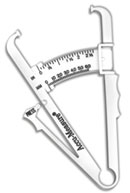 e standing, firmly pinch the suprailliac skinfold between your left thumb and forefinger, see figures 2 and 3. Place the jaws of the Personal Body Fat Tester over the skinfold, while continuing to hold the skinfold with the left hand, see figure 4. e standing, firmly pinch the suprailliac skinfold between your left thumb and forefinger, see figures 2 and 3. Place the jaws of the Personal Body Fat Tester over the skinfold, while continuing to hold the skinfold with the left hand, see figure 4.
- Step 3 Press with the thumb where indicated on the Personal Body Fat Tester until you feel a slight click. The slide member will automatically stop at the correct measurement, see figure 5. After reading your measurement, return the slide member to the far right starting position. Repeat three times and use the average as your measurement. Refer to the body fat interpretation chart to determine your body fat percentage and what it means.
   

This can be done to many sites; the most important sites to be measured are the following:
| Back of the arm (triceps) |
Back of the arm (triceps) |
 |
 |
| Shoulder blade (subscapular) |
Waist (Suprailiac) |
 |
 |
These four calculations are calculated as a sum, or separately after calculating it as a sum, you can use this chart to see your body fat as a percentage:
.jpg)
.jpg)
Notes about this method:
- Accuracy depend on the person who measures, it’s hard to do it yourself and is preferred to have an expert to do it.
- As long as your measurement showing that they are decreasing, it means you are improving, even if you don’t know how to exact measures it as a percent.
Bioelectrical Impedance scales (BIA)
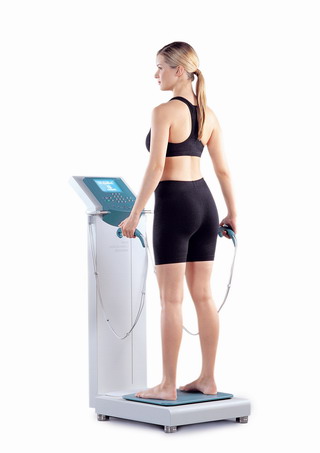 The second method we are discussing here is BIA scale. It can be either using a handheld scale or standing on a BIA scale. it works by the conductsly of electricity, since muscles contain 70% water while fat contain almost no water, the BIA scale sends a signal from hand to hand or foot to foot, the faster the signals travels, the more muscles you have and the less fat. The second method we are discussing here is BIA scale. It can be either using a handheld scale or standing on a BIA scale. it works by the conductsly of electricity, since muscles contain 70% water while fat contain almost no water, the BIA scale sends a signal from hand to hand or foot to foot, the faster the signals travels, the more muscles you have and the less fat.
Notes about this method:
- One of the quickest and easiest methods to use.
- Results can be accurate (4% margin of error) if done properly.
- Results are affected by hydration, food intake and body temperature, if you are dehydrated, you’re body fat will show higher than it really is. Therefore, it should be done in the same time and condition, preferably in the morning, on an empty stomach (just a glass of water), before working out.
DEXA (dual energy X-ray absorptiometry)
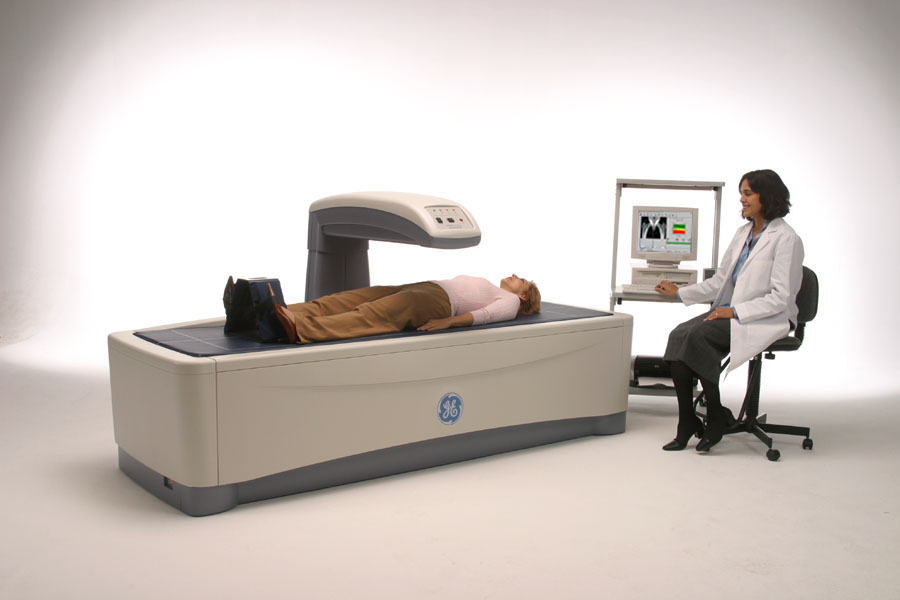
A more advanced fancy way to measure your body fat is using DEXA. DEXA uses a whole body scanner and two different low dose x-rays to read both soft tissue mass and bone mass. It was used more to measure the bone mass, but lately is used for to measure body fat as well.
Notes about this method:
- Offers a very accurate measurement, with 2-3 % margin of error.
- It’s a little bit costy to do it, and need special places, like hospital and universities for performing.
- It takes about 10-20min to do the body scan.
- It has the advantage in showing you were the fat is accurately.
Hydrostatic Weighing
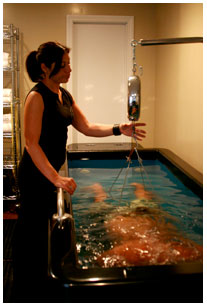 If you wondering what that is, it’s underwater weighing. Since fat is lighter than water it will float, that why fat people can swim easily, while muscular one tends to go down. If you wondering what that is, it’s underwater weighing. Since fat is lighter than water it will float, that why fat people can swim easily, while muscular one tends to go down.
measuring you body fat using this is very accurate as well (2-3% margin of error), still it’s not that easy to perform, you need actually to step on some special scale under water, your whole body should be dunked underwater and you should blow down all the air in your lungs, if you don’t blow it all while dunked, it won’t be accurate.
These are the methods for measuring you body fat percentage, it doesn’t matter which one you use, but you should be using one to help you measure you progress, and modify anything you need on your program. This can be done once every two weeks or once a month, as bf percentage doesn’t go down over a night, weekly measurement is not advised.
Body mass index (BMI)
Calculated using weight and height weight(kg)/ height(m) x height(m), BMI can give a general idea about your body, however it doesn’t take body composition, age, sex into account, which means it is not very accurate, I honestly don’t know why it’s used for athletes, as I see no use, but for an average person, it can give a good idea. Especially f you goal is losing weight.
Since BMI is still used very widely, it’s worth mentioning and recording, but best used in combination of other method.
BMI Chart:
- A BMI less than 18.5 indicates underweight
- A BMI of 18,5 - 24 is considered Normal
- A BMI of 25 - 30 is considered overweight
- A BMI of over 30 is considered obese
For bodybuilders, BMI is the worest assessment you can use, since it doesnt take body composition in consideration and focus on the weight mostly, means it cant be taking seriously for bodybuilder, actually as a bodybuilder the worse you are on BMI scale, the better bodybuilder you are, since it shows that you are high on muscles mass.
This pic shows 2 persons, same weight and same BMI, it reflects the problem with BMI.

Fitness component
Any training program should have a positive effect on one or more of the the five fitness component ( Strength, Endurance, Speed, Flexibility and Agility)
Many ways to measure the progress in these component, you should focus on particular ones you looking to improve and your program should be built on improving this component. An ideal training program will include all the component in it, with focus on one or two.
For example you can record your weight left and reps each time and see if there is improvement, you should be working on improving them, even increasing 1 rep would make a difference. if you keep doing the same thing, eventually the body won’t improve anymore, so you have to keep pushing it to improve, and a journal is a great way to always check what you done previous workout and to try to beat yourself.
Same goes for speed, Endurance, flexibility and agility.
Heart rate
Any physical activity will have a positive effect on your heart, especially on the long run, and with better heart health, you enjoy a better healthier life.
Although most kind of training improves the heart rate, the most important one is aerobic training which involves long time training with moderate intensity. Aerobic training strengthen the muscles involved in respiration, to facilitate oxygen intake, it also strengthen and enlarge the heart muscles, make it easier to pump and improves circulation while reducing blood pressure.
So how can you use heart rate to measure your progress?
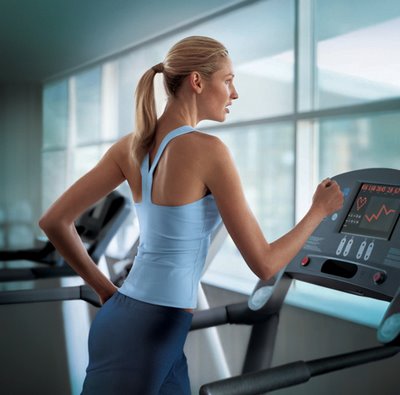
First the resting heart rate will become lower as your cardiovascular fitness level increase, so measuring your resting heart rate before you start training and, once every 2 week will show improvements.
You can also check your heart rate while running on treadmill, and record the maximum heart rate on the specific speed, as you cardiovascular improves, you will start using the same speed with lower heart rate.
A more advanced way to measure the improvement in your aerobic system, is measuring VO2 max by a professional. Maximal oxygen uptake (VO2max) is widely accepted as the single best measure of cardiovascular fitness and maximal aerobic power.
We will have a more depth look at VO2max in future issues.
With improvement in the heart health, blood pressure values will also improves, so recording your blood pressure and measuring the progress is very good to show your progress.
Classification of blood pressure for adults:
| Category |
systolic, mmHg |
diastolic, mmHg |
| Hypotension |
< 90 |
< 60 |
| Normal |
90 – 120 |
and 60 – 80 |
| Prehypertension |
121 – 139 |
or 81 – 89 |
| Stage 1 Hypertension |
140 – 159 |
or 90 – 99 |
| Stage 2 Hypertension |
≥ 160 |
or ≥ 100 |
Cholesterol level
Exercise increases the amount of HDL cholesterol (good cholesterol) in your blood, while reducing the amount of LDL cholesterol (bad cholesterol).
Measuring your cholesterol level before starting exercises and then compare the result with after.
- < 200mg/dl is the desired level of cholesterol in the body
- 200-240mg/dl is where the risk starts
- > 240mg/dl is considered high risk
Sexual performance
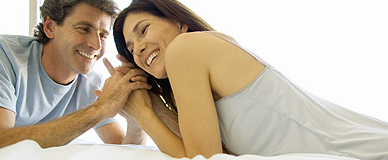
Now this will make many of you interest, mention the word sex and you get most people attention. Exercise is proven to improve sex life, from the boosting confidence from the better look you getting, to the endurance, strength and cardiovascular improvement that will help you function better.
This shouldn’t be calculated, you won’t be like putting a journal next to bed, finish and record, hmm 3 times, 5 min, 7,15sec and 12 min, and it doesn’t work that way.
It’s just important for you to notice how exercises improved and improving your sex life both in quantity and quality.
one study showed that doing aerobic exercises for 20min session x 3 times a week, reduced the risk of erectile dysfunction by 50%, now that’s a good reason to get some people lazy ass to the gym.
Mirrors

Mirrors are the most valuable tool you can use for assessment, and no mirrors don’t lie, if you look fat in the mirror, you are fat. With mirrors you can notice how your body changing, and taking a new better shape, you would notice the areas that need more work, and area that are advancing fast.
You can also take a weekly look at your body and record your notes, so you can adjust or discuss it with your trainer.
mirrors aren’t to be underestimated, and it can be a great motivation, just look at how bodybuilders just love mirrors, because they care about their body, working hard to improve each muscles, and mirrors just make them glad for what they achieved and pay attention what need to be done, they do it subconsciously most of the time.
Summary:
We just discussed some of the ways you can measure your progress from training, make sure you select practical ones and start applying it, you will be satisfied with the results after doing so, and notice that you are improving no matter what.
Good luck
Shady Eid is a certified Personal Trainer, writer and competitive bodybuilder based in UAE, for questions and comments you can contact him at: Shady@arabianmuscles.com
|

